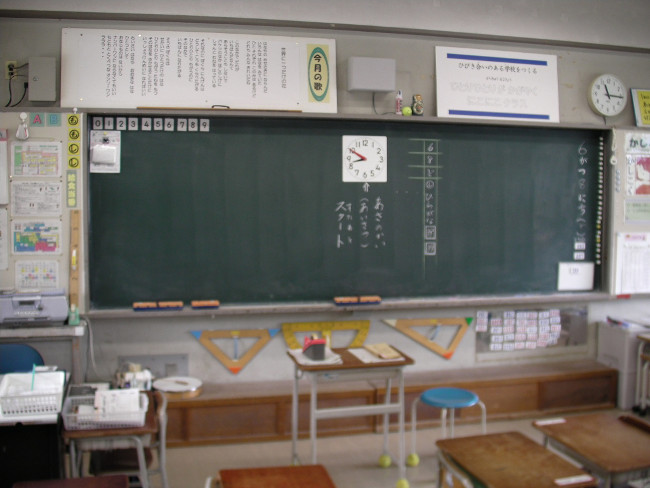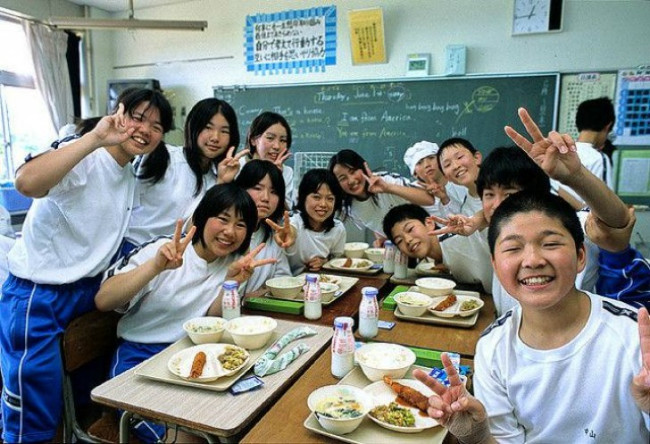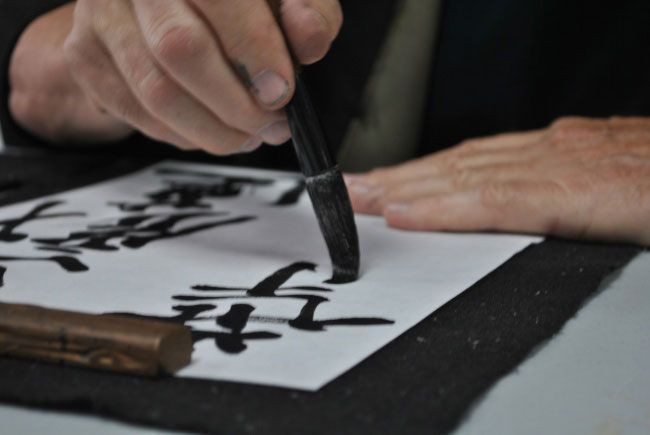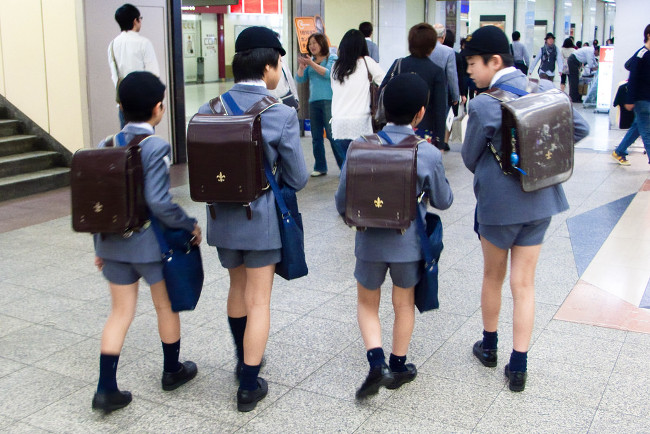5 interesting things about the Japanese education system make the whole world jealous
Considering the more personality education of the academic results, standardized lunches or the students cleaning the classroom without labor is the impressive things you see in Japanese schools.
You say that you like Japanese culture , but you will be surprised to know that students in Japanese public schools often have lunch with teachers, learn traditional arts at school or not. any exam in the first 3 years of school. Let's explore the information below to know more about the Japanese education system!
1. There are no exams in the first 3 years of school

In Japan, students do not have to undergo any exams in the first 3 years of school, until they reach grade 4 (10 years old). In these three years, you just need to do small exercises in class. The country believes that the goal in the first 3 years of study is not to assess their level of knowledge but to formulate standards for behavior and personality development.
At school, students are taught how to respect others, to be gentle with animals and nature around them. Students must show respect for each other and of course their teachers. The most important thing is to maintain the teacher-student relationship. In particular, if students do not want their teacher to be disappointed, do not show disrespect.
Besides, they also directed children with precious qualities such as generosity, compassion and empathy . Moreover, they also need to learn courage, self-control and fairness.
2. Schools do not need labor
 Photo source: Timothy Takemoto
Photo source: Timothy Takemoto
Students in Japan clean up their own classrooms. They clean the classrooms, the cafeteria and the toilet. The education system in Japan believes that asking students to clean up the classroom helps them learn how to work in groups, share responsibilities and help others. Perhaps, the lesson to be addressed here is how children clean up in schools that affect the way they care for others. In particular, spending time cleaning schools creates opportunities for character formation, helping them to respect the labor of others.
Students divided into groups based on assigned tasks. The groups will be divided equally, rotating throughout the year, so each student has the opportunity to experience all the different tasks.
3. Standardize lunch

In addition to students with severe allergies to food, all students in Japan are served meals on a standardized menu. This is not normal, because lunch in American public schools is known for lack of nutrients, too much sugar and trans-fats. Japanese people always teach their children to eat healthy right from the priority of quality ingredients to the actual food.
Lunch at primary and secondary schools in Japan cooks on a standard menu prepared by quality chefs and health care professionals. In addition, lunch in schools is mostly made of fresh, safe ingredients originating from the locality.
Teachers have lunch together with students as a way to develop positive relationships between them. Normally, students in Japan serve lunch together as a way to assign the responsibilities of everyone in the class.
4. Teach traditional arts

What is considered to be the basic knowledge found in the education system of public schools in Japan is outside the cornerstone of most American public schools. Japanese students are taught traditional arts such as Shodo (書 道, Japanese calligraphy) and haiku, a typical form of poetry in this country.Shodo is the art of writing hieroglyphs on rice paper. This art requires language knowledge, helping students build respect for traditional culture. In addition, the haiku craftsmanship also teaches how to respect and preserve Japan's hundred-year-old traditional culture.
5. Most Japanese students wear uniforms to school
 Image source: elmimmo
Image source: elmimmo
Middle school students in most public schools in Japan require students to wear uniforms to school. Each school has different criteria, but most uniforms have the following criteria: for boys are military-style costumes, for girls are sailor style costumes. School uniforms are usually quite modest in color, style and decoration.
Based on all the school-related standards, there is also a purpose behind this uniform regulation. That is when students wear uniforms on their way to remove social barriers and put students in the learning environment. Some schools in Japan also have strict rules about accessories such as backpacks, makeup and even hairstyles.
You should read it
- The 15 harsh rules in Japanese school just listening is enough to make you 'goosebumps'
- Which type of Japanese heat lunch box should choose?
- Instructions for installing Japanese keyboard for Windows
- A few reviews of Japanese goods 2 old Japanese goods, Japanese goods
- What kind of Japanese annealing pot is worth buying today?
- 12 meals causing fever to social networks of postpartum women at Japanese hospital
- The whole world admires Japanese techniques of making carpentry without nails or snails
- Learn how to be humble in Japanese tea ceremony art
- Japanese domestic air purifier and things to know before making a purchase
- The secret to keeping the body slender thanks to the diet of Japanese women
- Download Japanese wallpapers for Windows 10
- Japanese alphabet
May be interested

Discover inside the 'apocalyptic underground', the place that holds the seeds of mankind

What do students around the world eat at school lunch?

26 'unimaginable' images of micro-apartments in the world

Santa's 'versions' are little known in the world

Surprise with a paper engine that still works well

Why do we yawn? Is yawning spread?






 How to Help Improve the Education System
How to Help Improve the Education System 7 principles that make a 'desirable' secondary education in Finland
7 principles that make a 'desirable' secondary education in Finland 16 small but wonderful things are only available in Japan
16 small but wonderful things are only available in Japan The 15 harsh rules in Japanese school just listening is enough to make you 'goosebumps'
The 15 harsh rules in Japanese school just listening is enough to make you 'goosebumps' 7 surprising truths you may not know yet
7 surprising truths you may not know yet The whole world admires Japanese techniques of making carpentry without nails or snails
The whole world admires Japanese techniques of making carpentry without nails or snails